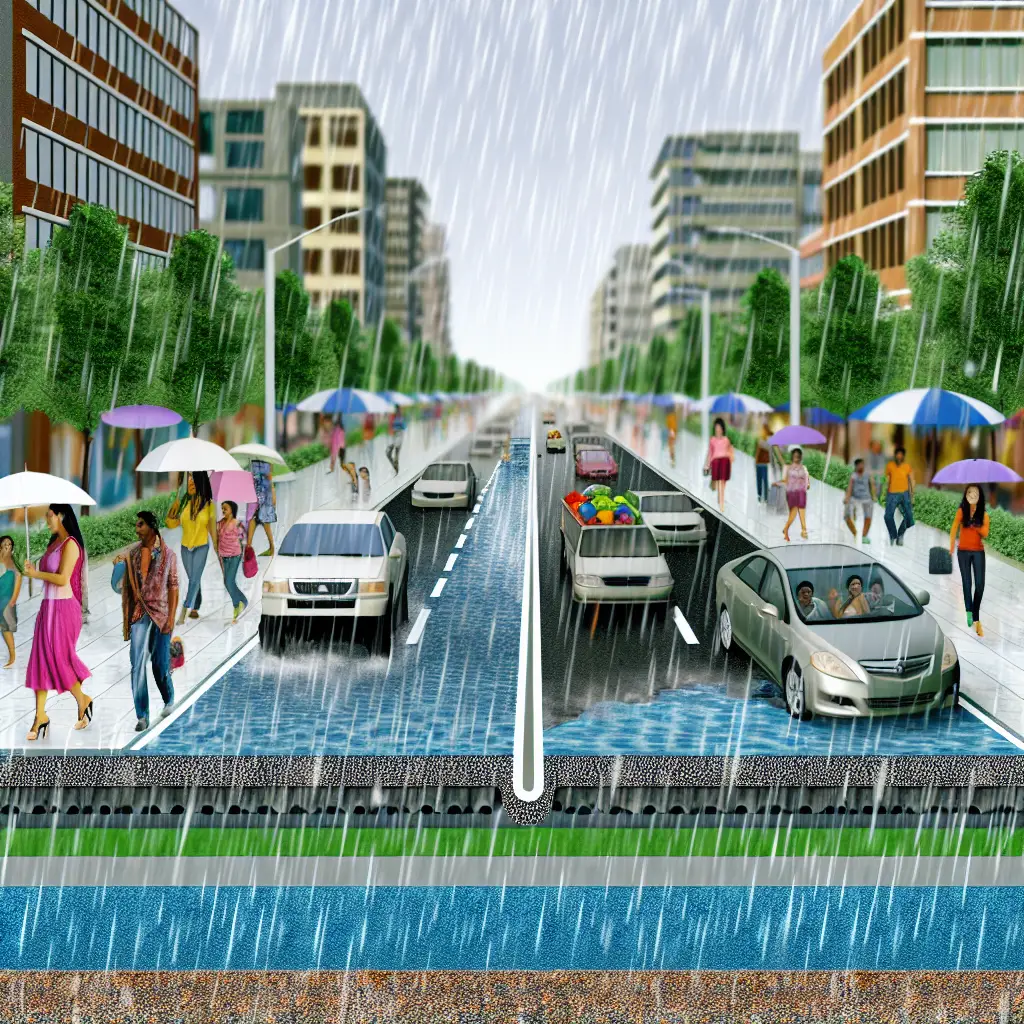
Water Logging Problem – Permeable Roads as Solution
Water logging has become a significant issue in urban areas around the globe. As cities expand and more surfaces are paved, rainwater has fewer places to go, leading to frequent flooding, property damage, and traffic disruptions. Permeable roads are emerging as a sustainable solution to this growing problem. This article explores the causes of water logging, the advantages of permeable roads, and how they can be implemented effectively.
Understanding Water Logging
Water logging occurs when water saturates the soil and the surface above it. In urban areas, impermeable surfaces like asphalt and concrete prevent water from soaking into the ground, causing it to accumulate on streets and sidewalks. Key factors contributing to water logging include:
- Over-Development: Rapid urbanization replaces natural landscapes with non-porous materials.
- Poor Drainage Systems: Outdated or inefficient drainage infrastructure can’t cope with heavy rainfall.
- Climate Change: Increasingly unpredictable weather patterns result in sudden and heavy downpours.
The Concept of Permeable Roads
Permeable roads, also known as porous or pervious roads, are designed to allow water to percolate through the pavement and into the ground below. This mimics the natural absorption process that occurs in undeveloped areas. Permeable roads utilize materials and construction techniques that promote infiltration, such as:
- Porous Asphalt: Asphalt mixed with open-graded aggregate, enabling water to pass through.
- Pervious Concrete: A mix of cement, water, and coarse aggregates with little to no fine aggregates, creating voids for water transmission.
- Permeable Pavers: Concrete or plastic pavers arranged with spaces in between, filled with gravel or grass, allowing water infiltration.
Advantages of Permeable Roads
Implementing permeable roads can bring a plethora of benefits, both environmentally and socially. These include:
- Reduced Flooding: By allowing water to seep into the ground, permeable roads help to reduce surface water runoff and prevent floods.
- Improved Water Quality: Water filtered through permeable pavements is naturally cleaned as it passes through the sub-base layers, removing pollutants and contaminants.
- Groundwater Recharge: Permeable roads promote the replenishment of aquifers, improving water availability in the long term.
- Heat Island Mitigation: Permeable pavements reduce the heat retained by urban surfaces, decreasing the urban heat island effect.
- Aesthetic Appeal: Permeable pavers can be designed to blend seamlessly into urban landscapes, enhancing the visual appeal of roads and pathways.
Challenges and Considerations
Despite the clear advantages, there are also challenges in the adoption of permeable roads:
- Initial Costs: Permeable pavement materials and installation can be more expensive upfront compared to conventional asphalt and concrete.
- Maintenance: Regular maintenance is required to prevent clogging and ensure effective water infiltration over time.
- Site Suitability: Certain soil types and underground conditions may not be ideal for permeable road systems.
However, many of these challenges can be mitigated with careful planning and community engagement.
Successful Implementation in Urban Areas
Several cities have successfully integrated permeable roads into their infrastructure, showcasing their potential to alleviate water logging issues. Examples include:
Case Study: Portland, Oregon
Portland has been a pioneer in green infrastructure, including the use of permeable pavements. The city implemented a pilot project featuring permeable asphalt on a residential street. The initiative significantly reduced runoff, contributing to better stormwater management and groundwater recharge.
Case Study: Chicago, Illinois
Chicago incorporated permeable pavers in its Green Alley Program, transforming alleys into sustainable stormwater management systems. These alleys not only reduce flooding but also enhance the city’s aesthetics and environmental resilience.
Future Prospects and Recommendations
The adoption of permeable roads is set to increase as urban planners and policymakers recognize their benefits. To promote this sustainable solution, the following recommendations should be considered:
- Government Incentives: Financial incentives can encourage developers and municipalities to invest in permeable road projects.
- Public Awareness: Educating communities about the benefits of permeable roads can garner public support for such initiatives.
- Collaboration: Collaboration between researchers, engineers, and policy makers can lead to optimized designs and implementations of permeable pavements.
By embracing permeable roads, cities can effectively tackle water logging issues, thereby enhancing urban livability and resilience against climate change. This forward-thinking approach not only addresses immediate concerns but also fosters a sustainable future.
In conclusion, permeable roads represent a viable and eco-friendly solution to urban water logging problems. The integration of such technology into city planning holds the promise of a flood-free, aesthetically pleasing, and environmentally sustainable urban landscape.









